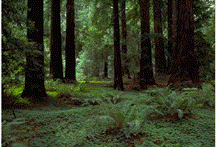ABSTRACTOne of the simplest questions an ecologist can ask about a site is how many species live there. The answer is important for basic researchers and managers alike, but can be deceptively hard to obtain. This exercise introduces students to the issues surrounding the estimation of species richness, and can be completed in a single three-hour lab session. Students will learn to collect data in the field, obtain their own estimates of species richness, and evaluate the underlying assumptions and validity of these estimates. The exercise is written for estimating the species richness of trees in forests but could easily be adapted for other plant or animal communities.
AUTHORSIsaac W. Park1,3 and David W. Tonkyn2 1Department of Geography, University of Wisconsin at Milwaukee, P.O. Box 413, Bolton Hall Room 410, 3210 N. Maryland Ave., Milwaukee, WI 53211 2Department of Biological Sciences, Clemson University, 132 Long Hall, Clemson, SC 29634 3Corresponding Author: Isaac W. Park (iwpark@uwm.edu) CLASS TIMEOne three-hour lab. OUTSIDE OF CLASS TIMEOn average, students will need two to three hours outside of the classroom to estimate species richness from the data and answer the associated questions. STUDENT PRODUCTSIn the field, students will learn to identify common trees. Afterwards, they will produce a short report that shows their calculations and resulting estimates of species richness, and discusses the strengths and weaknesses of these estimates based on general principles and their own field observations. SETTINGThis lab was originally designed for estimating species richness of eastern deciduous forest trees, during the growing season. It can be adapted easily to other taxa or environments, with appropriate changes to sampling methods and materials. COURSE CONTEXTThis experiment has been used successfully in an upper-level undergraduate and graduate ecology lab course. A simplified version of this lab could also be utilized in lower level biology, ecology, or conservation courses. We typically have four to six lab sections of 10-14 students each, with each section split into teams of three or four students. Data collected during the field portion of the exercise are pooled across all teams by the instructor, and shared with the entire class through email or the class website. Each student must analyze both the data collected by his or her own team and by the entire lab section, estimate species richness from a smaller and larger data set, and compare their values. INSTITUTIONClemson University is a land-grant (public) research university with a range of undergraduate and graduate programs. TRANSFERABILITYThis study can be performed in any region where suitable habitat is accessible. The field observations are best performed during a season when the plants (or other taxa) are easily observed and identified. For example, we sample tree diversity between the months of March and October when leaves are present and tree species are most easily identified. Because students typically work in teams of 3-4 in the field, this exercise can be used easily by lab sections that range from a few students to 40 or more. In cases where classes include 20+ students, however, it may be desirable to have more than one instructor present to assist, or to assign students to larger teams. DOWNLOADSDescription of other Resource Files: ACKNOWLEDGMENTSWe would like to acknowledge the lab instructors Jenifer Bunty and Christie Sampson for their advice and assistance in the development of this lab survey. CITATIONIsaac W. Park and David W. Tonkyn. 15 January 2015, posting date. How many species are there? Determining species richness. Teaching Issues and Experiments in Ecology, Vol. 10: Experiment #3 [online]. http://tiee.esa.org/vol/v10/experiments/park/abstract.html |

Sequoia sempervirens forest in Muir Woods National Monument in California. (This public domain image was created by the U.S. National Park service.) full size image |
<top> | |